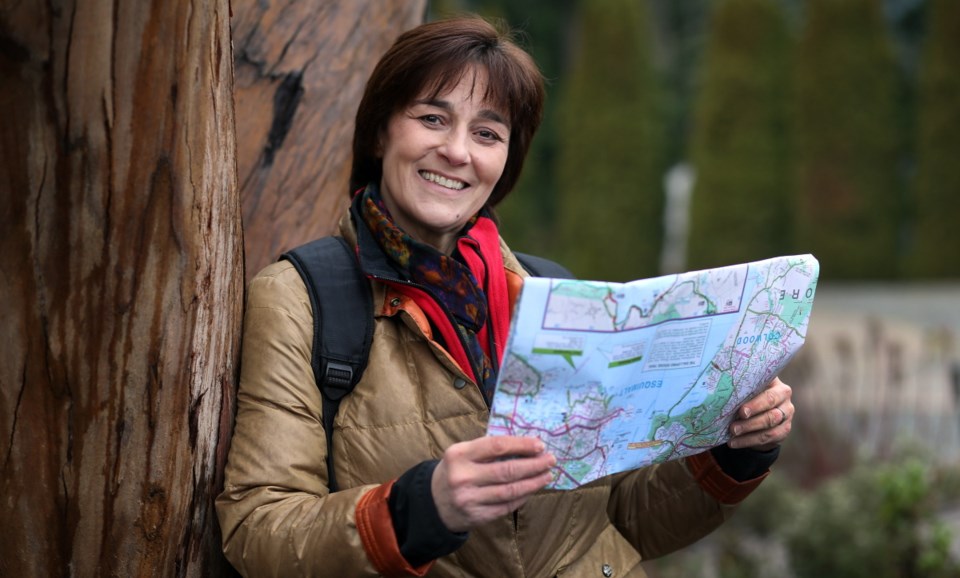Marion Grau has brought a little slice of European-style tourism to the capital region.
Her new business, Trek and Treats, offers visitors self-guided hiking tours on existing trails and other walkways, stopping in bed-and-breakfast accommodations along the way.
“I think it is like a walking meditation,” said Saanich resident Grau, who is originally from Germany but has lived in Canada since 1985.
Trekking tours are staged throughout the world. Grau based her walking tours on similar offerings in Europe, such as Camino de Santiago or Way of St. James, in northern Spain.
Vancouver Island is already a popular destination for hikers, who follow guides or head out on their own.
“I’m hoping to attract Canadians as well as tourists from abroad to our area,” Grau said.
Greater Victoria treks feature spectacular scenery through local parks, she said, adding “everybody thinks you have to go to Tofino if you want to see the west coast.”
The local hikes can help alleviate the pressure on some of the Island’s major trails, such as the West Coast Trail, she said.
Grau has mapped out a contiguous 85-kilometre route from Sidney to Brentwood Bay, through Saanich or the Highlands, the Esquimalt Lagoon, and to East Sooke.
She calls it the Salish Shores Discovery Trail and started offering treks last year. Details are on the web at trekandtreats.ca.
Trek and Treats runs hikes lasting five days, four nights, or three days and two nights, and personalized treks can be arranged. Cycling, kayaking and horse-back riding can be incorporated into trips.
The company provides advice on where to hike, accommodation, transports luggage between stops and provides assistance and rides if necessary, Grau said. Breakfast, maps and trip information, including area history are part of the package.
A picnic lunch is provided if needed, but most routes go by restaurants where hikers can buy lunch and dinner. A guide walks with clients through remote areas, she said.
The five-day trek ends just outside of Sooke and has a basic cost of $1,150 per person. Three-day hikes, one on the Saanich Peninsula and another for the West Shore, are $650 each. They are designed for active people, but are not extreme, she said. Grau discusses daily walking distances to ensure they suit trekkers.
Each day typically sees hikers cover at least 10 kilometres. Longer routes may see them trek 20 kilometres per day.
Treks suit people who are active but don’t go to extremes, Grau said. “It’s a way to get out of a car.”
Companies like Grau’s are part of the changing landscape in the local tourism sector as visitors shift from attractions to adventure experiences.
Greater Victoria’s tourism sector said it is responsible for a $1.9-billion annual injection into the local economy through visitor spending on everything from hotels and restaurant meals to tours and events.
After a strong summer, November’s hotel occupancy rate rose nearly four per cent compared with the same month in 2013, according to Chemistry Consulting most recent tourism report.
The average daily room rate rose by $6.25 to $104.42 in November from the same month in 2012.
As well, hotel occupancy rates were up 4.5 per cent in Nanaimo over the previous year, the report said.
Recent research shows today’s hotel guests are seeking life experiences rather than luxuries, Frank Bourree of Chemistry Consulting said in his report. “Additionally, the sense of being connected and feeling at home is more important than traditional hotel luxuries.”
To respond to this trend, some hotels are creating larger lobbies to act as social hubs for guests.



